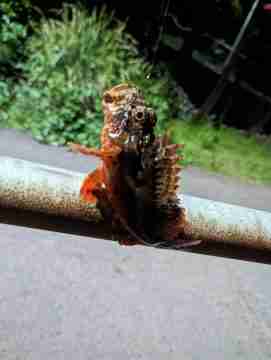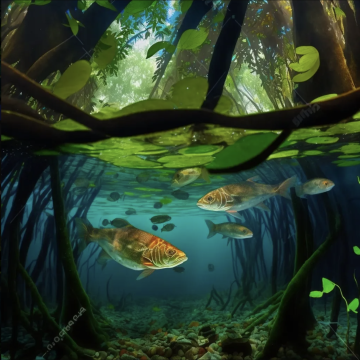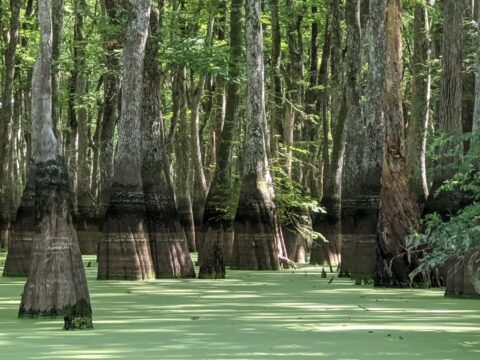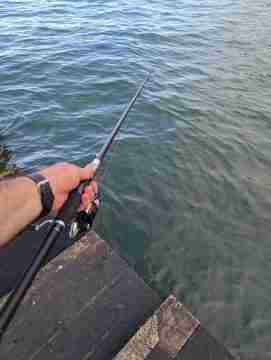🎣 Ready to Catch Micro Sized Fish? Here’s the Gear You’ll Need:
✅ Micro Master Size #30 Hooks – Perfect for sunfish-sized mouths
✅ Telescopic Rod Kit – Compact & travel-friendly
✅ Ultra-Finesse Micro Floats – Detect even the tiniest nibble
📦 Order Today — Free USA Shipping!
A Somewhat Comprehensive Guide to Identifying Jewelfish Cichlids in Florida
Jewelfish, a species of African cichlids, have been a subject of fascination and confusion for many micro anglers in Florida. With six different species present it’s no wonder that even experts have had difficulty distinguishing between them. To see why let’s delve into the history, scientific studies, and morphological characteristics of these captivating fish to provide a clearer understanding for micro anglers, aquarium enthusiasts, and researchers alike.
A Historical Perspective
Back in 1962, Florida’s state authorities identified every jewel cichlid as the African Jewelfish (Hemichromis bimaculatus). This identification was primarily based on the fact that before the 1970s the Hemichromis bimaculatus was one of the few jewel species popular in the aquarium trade. However, this assumption was challenged in the 1990s when the state revised its stance identifying the cichlids as Jewel Fish (Hemichromis letourneuxi).
As the years passed the aquarium trade saw a rise in the popularity of various Jewel species. This led to notes in Florida’s state records highlighting the unclear boundaries within the Hemichromis genus. The state’s approach seemed to be one of convenience rather than accuracy while treating all jewel cichlids as a singular species for invasive species management.
Scientific Studies and Findings
A 2019 study titled “Genetic Characterization of Non-Native African Jewelfish, Hemichromis letourneuxi Sauvage 1880, in Florida” by Belfiore & Schofield shed light on the genetic diversity of Jewelfish in Florida. The study, which sampled jewelfish from six different areas across the state, found evidence of genetically unique groups and suggested multiple release sites.
Interestingly, while most of these fish shared genetic similarities the Tampa Bay samples were distinct hinting at a separate introduction event. This study, although limited in scope, highlighted the genetic diversity of jewelfish in Florida challenging the state’s singular identification approach.
Morphological Identification
For those passionate about fishing and identifying Jewelfish cichlids morphological characteristics offer a way to distinguish between species. Based on scientific journals and aquarium trade guides here are the key morphological traits for the different Jewelfish found in Florida:
- African Jewelfish (Hemichromis bimaculatus): Characterized by three spots with the opercular spot having a green margin.
- Jewel Fish (Hemichromis letourneuxi): Displays three spots with the middle spot situated above the lateral line.
- Jewel Cichlid (Hemichromis guttatus): Features two spots with the second spot bisecting the lateral line.
- Blood-Red Jewel Cichlid (Hemichromis lifalili): Has two spots with the second spot positioned above the lateral line.
- Turkana Jewel Cichlid (Hemichromis exsul): Displays one or two spots with a faint tail spot and blue radiating spangling.
- Congolese Jewel Cichlid (Hemichromis stellifer): Characterized by two spots and 7-9 narrow dark bars on its sides.
Identification of Jewelfish Isn’t Easy
Identifying jewelfish in Florida is a complex task given the state’s history of misidentification and the diverse species present. However, with a combination of historical knowledge, scientific research, and morphological characteristics it’s possible to distinguish between the different species.
For enthusiasts, it’s essential to approach identification with an open mind, using available resources and personal observations. After all, the beauty of these fish lies not just in their vibrant colors but also in the mysteries they hold.
🎣 Ready to Catch Micro Sized Fish? Here’s the Gear You’ll Need:
✅ Micro Master Size #30 Hooks – Perfect for sunfish-sized mouths
✅ Telescopic Rod Kit – Compact & travel-friendly
✅ Ultra-Finesse Micro Floats – Detect even the tiniest nibble
📦 Order Today — Free USA Shipping!








